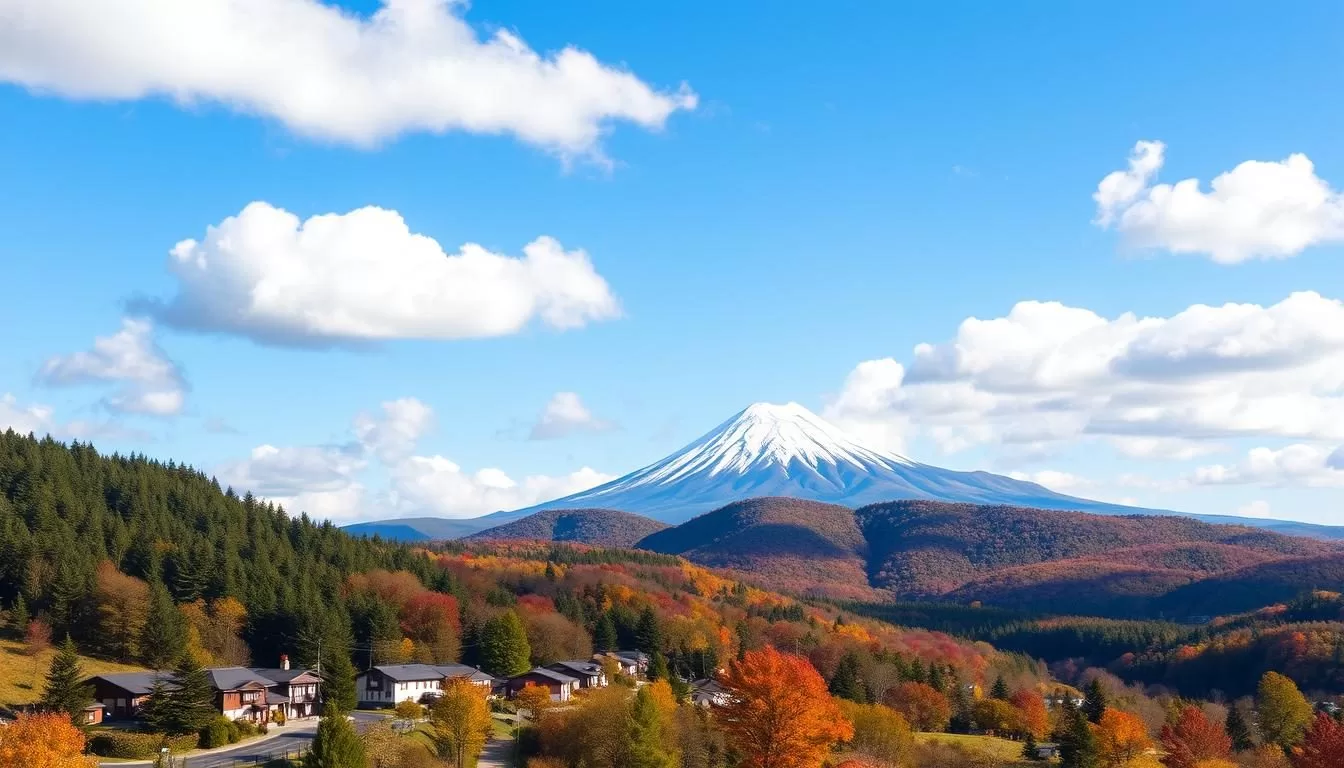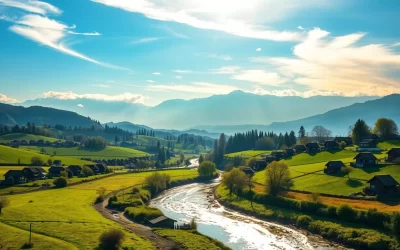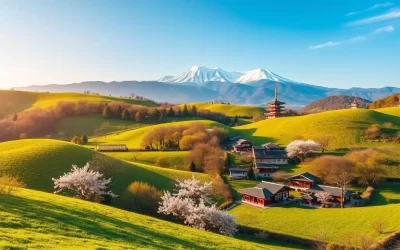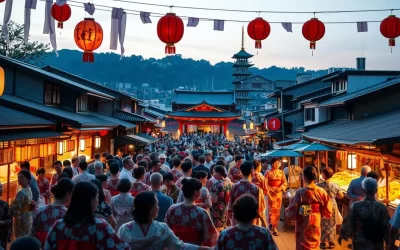Planning a trip to Aomori Prefecture can be a thrilling experience, with its unique blend of natural beauty and cultural heritage. Located in the northernmost part of Japan’s main island, Honshu, this region offers a distinct seasonal charm that changes dramatically throughout the year.
Understanding the weather patterns in Aomori is crucial for a successful trip. The region experiences some of Japan’s most distinct seasonal variations, from heavy snowfall in winter to vibrant festivals in summer. By choosing the right time to visit, you can enhance your travel experience and enjoy activities such as snowsports or exploring local festivals.
Whether you’re seeking outdoor adventures or cultural immersion, timing your trip correctly will make all the difference. This guide will help you determine the ideal months to visit based on your preferences and the activities you enjoy.
Discovering Aomori Prefecture: Japan’s Northern Gem
As you plan your trip to Japan, consider Aomori Prefecture, a gem that offers a distinct blend of nature and culture. Located at the northern tip of Honshu, Japan’s main island, Aomori is known for its dramatic mountain ranges, rugged coastlines, and fertile agricultural lands.

Geographic Location and Climate Overview
Aomori Prefecture sits at the northernmost point of Honshu, making it one of Japan’s snowiest regions. The unique climate is influenced by ocean currents from both the Sea of Japan and the Pacific Ocean. The prefecture’s diverse geography includes the UNESCO World Heritage Shirakami-Sanchi beech forests, volcanic mountains, and fertile lands that produce Japan’s finest apples.
Aomori experiences four distinct seasons with dramatic temperature variations, from snowy winters averaging -1°C (30°F) to warm summers reaching 26°C (79°F). Each season offers a completely different travel experience, making Aomori a year-round destination.
Why Weather Matters When Visiting Aomori
Understanding Aomori’s climate patterns is crucial for a successful trip. Weather considerations directly impact the accessibility of certain attractions, transportation reliability, and the availability of outdoor activities. By being aware of the months and seasons that characterize Aomori’s climate, you can pack appropriately and avoid weather-related disappointments.
Timing your visit to coincide with the region’s famous seasonal events, such as the Nebuta Festival or peak apple harvest, can enhance your experience. The prefecture’s remote location means that weather can change rapidly, especially in mountainous areas, making advance planning essential for a smooth trip to this northern place in Japan.
Winter in Aomori: December to February
Winter in Aomori Prefecture is a magical time, with the region receiving some of Japan’s heaviest snowfall. This period transforms the landscape into a serene and picturesque wonderland, attracting visitors from around the world.
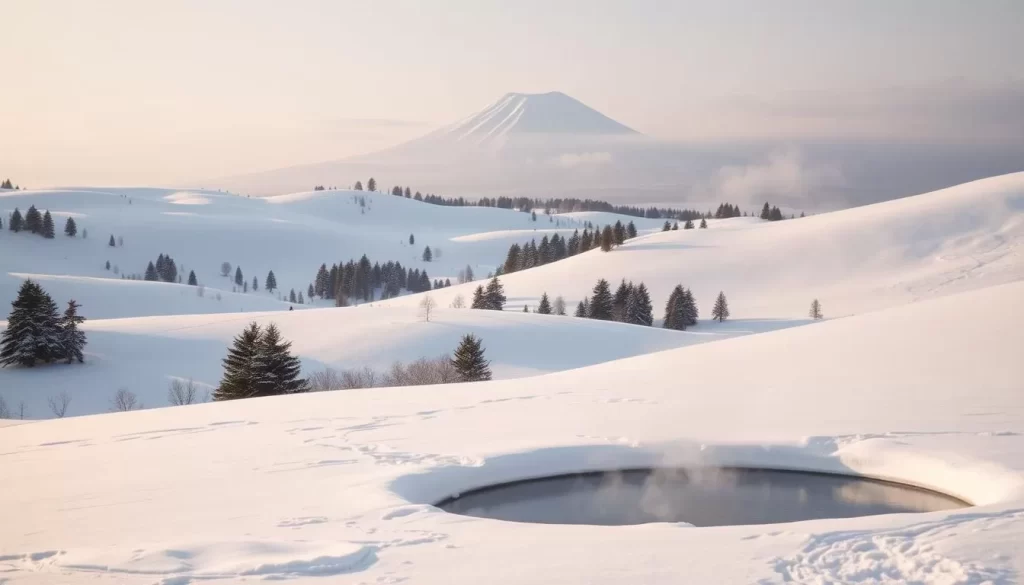
December: Festive Atmosphere and Early Snow
December marks the beginning of winter in Aomori, bringing with it a festive atmosphere and the early signs of snowfall. The weather conditions are generally dry, making it a good time to visit before the peak winter season. You can enjoy early season skiing and the illuminations that light up the prefecture, creating a magical ambiance. However, it’s worth noting that some tourist attractions may close around December 29 for the New Year holidays.
January: Peak Snow Season and Winter Activities
January is the peak snow month in Aomori, with daytime temperatures around 0°C (32°F) and nighttime temperatures dropping to -7°C (19°F). This creates ideal conditions for winter sports enthusiasts to enjoy Japan’s famous powder snow. You can indulge in various winter activities such as skiing at resorts like Hakkoda, snowshoeing through ancient beech forests, and soaking in volcanic hot springs (onsen). The “snow monsters” on Mt. Hakkoda are a particular highlight, with trees covered in thick snow creating a surreal landscape.
February: Winter Festivals and Fewer Crowds
February in Aomori offers a mix of winter festivals, including snow lantern festivals and the Hachinohe Enburi Festival. While the snowfall continues to be heavy, the transportation conditions are slightly more reliable than in January. You can enjoy the festive atmosphere with fewer crowds compared to the peak New Year period, making it a great time to experience the local culture and winter landscapes.
| Month | Average Temperature | Activities |
|---|---|---|
| December | Cold, with early snow | Festive illuminations, early skiing |
| January | Peak cold, around 0°C (32°F) daytime | Skiing, snowshoeing, onsen, “snow monsters” |
| February | Cold, continued heavy snowfall | Winter festivals, snow lanterns, Hachinohe Enburi Festival |
Visiting Aomori Prefecture in winter requires some planning due to potential transportation disruptions and early sunset times. However, the unique experiences and landscapes make it a worthwhile trip. You should be prepared for the cold temperatures and possible road closures, but the serene snow-covered landscapes and festive atmosphere provide a truly unforgettable experience.
Spring Awakening: March to May
As the last wisps of winter dissipate, Aomori Prefecture bursts into spring, offering a captivating blend of culture and nature. This season brings a unique charm to the region, with mild weather and breathtaking landscapes.
March: Transition Season and Early Blooms
March serves as a transition month in Aomori, where lingering winter conditions gradually give way to early signs of spring. You can experience both winter activities and the first spring blooms in lower elevations. Early flowering plants and trees, such as plum trees, deliver the first signs of spring, while the weather is getting noticeably milder.
April: Cherry Blossom Season in Aomori
April brings the first significant warming, with daytime temperatures reaching 11-17°C (52-63°F), though nights remain cool at 3-5°C (37-41°F), making it ideal for outdoor exploration without summer’s humidity. Cherry blossom viewing (hanami) in Aomori offers unique experiences, particularly at sites like Hirosaki Castle Park, home to over 2,600 cherry trees. The park is famous for its “cherry blossom carpet” of petals floating on the castle moat.
May: Lush Greenery and Comfortable Temperatures
May delivers comfortable temperatures, lush greenery, and the blooming of apple blossoms across Aomori’s famous orchards. However, travelers should be aware that early May coincides with Golden Week holidays when domestic tourism peaks and prices increase. Spring visitors to Aomori can enjoy the awakening landscape with fewer crowds than summer months, though weather can be unpredictable with occasional cold snaps or rain showers.
| Month | Weather | Activities |
|---|---|---|
| March | Mild, transitioning from winter | Winter sports, early spring blooms |
| April | Mild days, cool nights | Cherry blossom viewing |
| May | Comfortable temperatures | Lush greenery, apple blossoms, Golden Week |
Spring in Aomori Prefecture is a time of renewal and beauty, offering a range of experiences from winter sports to cherry blossom viewing. With comfortable temperatures and fewer crowds than the summer months, it’s an ideal time to visit and enjoy the awakening landscape.
Aomori Prefecture, Japan: Best Months for a Weather-Savvy Trip in Summer
Aomori Prefecture offers a unique summer experience, distinct from the sweltering heat found in southern Japan. The summer months bring a refreshing change to the region, making it an ideal destination for those seeking to escape the intense heat and humidity.
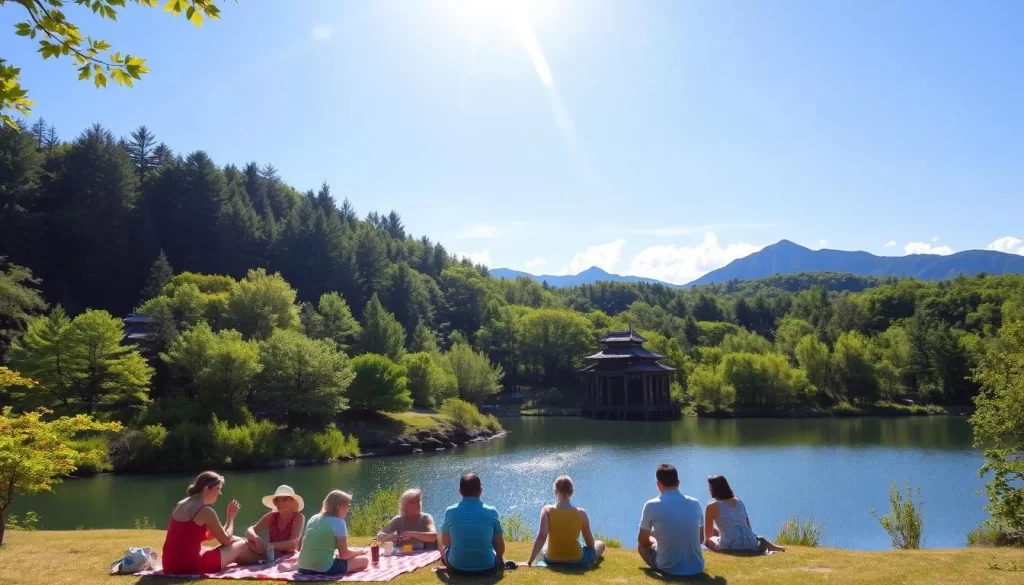
June: Early Summer and Hiking Season
June marks the beginning of summer in Aomori, with the rainy season (tsuyu) typically having less impact on this northern region compared to other parts of Japan. This makes June an excellent time for hiking as the mountain trails become fully accessible. Although occasional precipitation can occur, the overall weather is mild and pleasant, with temperatures gradually warming up.
July: Warm Weather and Pre-Festival Preparations
July brings increasingly warm weather to Aomori, with longer daylight hours that are ideal for exploring the prefecture’s natural attractions. Places like Lake Towada, Oirase Gorge, and the Shirakami-Sanchi beech forests are perfect for outdoor activities. The warm weather sets the stage for the vibrant festivals that follow in August.
August: Nebuta Matsuri and Peak Tourism
August is the most vibrant month in Aomori, highlighted by the world-famous Nebuta Matsuri festival, which takes place from August 2-7. This festival features enormous illuminated floats, traditional music, and dancing, attracting over 3 million visitors to Aomori City. It’s a peak tourist season, with high demand for accommodations and a lively atmosphere. Visitors can also enjoy Aomori’s famous produce, including the early apple harvest, fresh seafood, and local specialties at various markets and festivals.
Summer in Aomori Prefecture is a great time to enjoy the outdoors, experience local culture, and savor the region’s culinary delights. With pleasant temperatures ranging from 21-26°C (70-79°F), it’s an ideal destination for tourists seeking a comfortable summer getaway.
Autumn Colors: September to November
From September to November, Aomori Prefecture experiences a breathtaking autumn season. The region transforms into a vibrant landscape of red, orange, and gold foliage, attracting visitors from around the world.
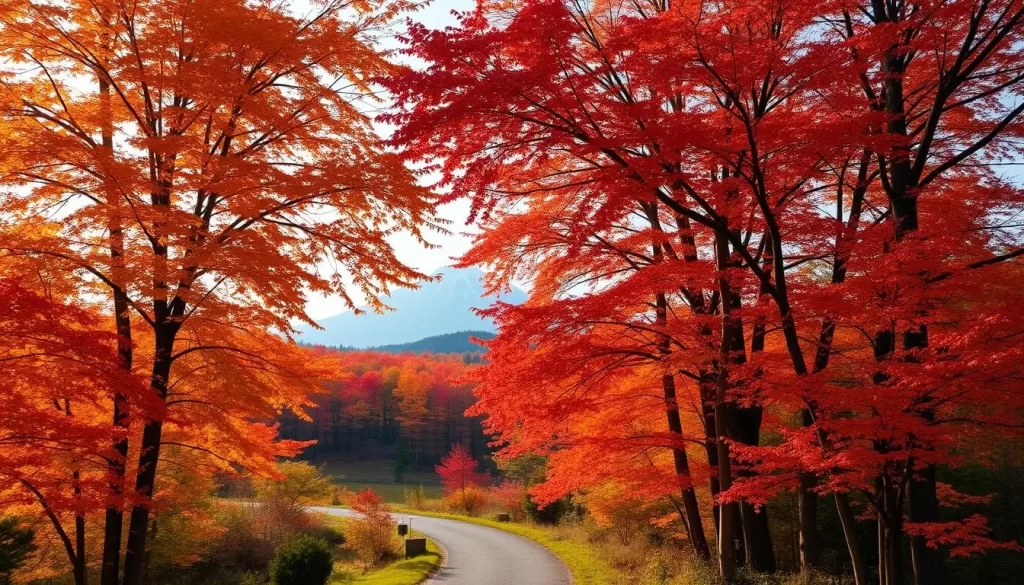
September: Mild Weather and Harvest Season
September marks the beginning of autumn in Aomori, with mild weather characterized by warm days and cool evenings. The humidity decreases, making it an ideal time for outdoor activities. This period coincides with the apple harvest season, where the prefecture’s orchards are laden with Japan’s finest apples. You can enjoy the harvest festivals celebrating the region’s agricultural bounty.
October: Peak Autumn Foliage and Outdoor Activities
October is the peak month for autumn foliage in Aomori’s mountain areas, such as Hakkoda and the Oirase Gorge. The contrast of vibrant foliage against clear streams creates spectacular photography opportunities. With fewer crowds than during the summer festivals, October is an excellent time to explore the region’s natural beauty. You can enjoy hiking and other outdoor activities in comfortable temperatures.
November: Late Autumn and Early Winter Preparations
November brings the final touches of autumn colors to lower elevations, while the first dusting of snow may appear in mountainous regions. This unique transition between seasons offers a serene landscape with very few tourists. As the weather cools, with daytime temperatures ranging from 8-18°C (46-64°F), it’s essential to be prepared for cooler evenings and potential early winter conditions.
Throughout the autumn season, you can indulge in seasonal foods featuring Aomori’s famous apples, matsutake mushrooms, and fresh seafood. The comfortable weather makes it an ideal time to explore the region’s parks and mountain areas, enjoying the autumn leaves and the overall natural beauty of Aomori Prefecture.
Weather Considerations for Your Aomori Trip
Aomori’s climate varies dramatically across seasons, and being prepared is key to a successful trip. Understanding the weather conditions will help you pack accordingly and make the most of your visit.
Packing Tips for Different Seasons
When traveling to Aomori, it’s crucial to pack according to the season. Winter travelers should bring extreme cold weather gear, including insulated waterproof boots, heavy coats, thermal layers, gloves, and hats. In contrast, summer visitors need light, breathable clothing, but should also include layers for cooler evenings, rain gear for occasional showers, and sun protection for outdoor activities.
Transportation Challenges During Extreme Weather
Aomori’s transportation network can be affected by extreme weather conditions. During winter, heavy snowfall can temporarily close mountain roads, delay trains, and impact local bus services. It’s advisable to check the latest weather forecast before traveling and consider purchasing travel insurance to cover any disruptions.
| Season | Weather Conditions | Precautions |
|---|---|---|
| Winter | Heavy Snowfall, Freezing Temperatures | Insulated gear, waterproof clothing |
| Summer | Warm Weather, Occasional Showers | Light clothing, rain gear, sun protection |
| Spring/Autumn | Fluctuating Temperatures | Layered clothing |
By being aware of these weather considerations, you can better plan your trip to Aomori and enjoy the unique experiences that each season has to offer.
Conclusion: The Ideal Time to Visit Aomori Prefecture
Whether you’re drawn to vibrant festivals, serene natural landscapes, or rich cultural heritage, Aomori Prefecture has a perfect time for you to visit. The ideal time to visit depends on your personal preferences and what you want to experience.
For a festival experience, August is the month to be in Aomori for the world-famous Nebuta Matsuri, though it comes with peak crowds. Nature lovers might prefer autumn (September-November) for the spectacular foliage and comfortable temperatures. Winter (December-February) is ideal for snow enthusiasts, while spring offers a unique cherry blossom experience later than most of Japan.
By planning your trip around Aomori’s seasonal highlights and preparing for the weather, you’ll discover why this northern prefecture is a must-visit destination in Japan. Regardless of when you visit, Aomori rewards weather-savvy travelers with authentic cultural experiences, natural beauty, and culinary delights.
The above is subject to change.
Check back often to TRAVEL.COM for the latest travel tips and deals.
